TRENDING FASHION IN CENTRAL AFRICAN REPUBLIC
May 13, 2022TRENDING FASHION IN EQUATORIAL GUINEA
May 27, 2022Chad is a landlocked country in the crossroads of North and Central Africa, formally known as the Republic of Chad. It is bordered by Libya to the north, Sudan to the east, the Central African Republic to the south, Cameroon to the south-west, Nigeria to the southwest (at Lake Chad), and Niger to the west. Chad has a population of 16 million people, with 1.6 million living in N’Djamena, the country’s capital and largest city. Chad is divided into three regions: the desert in the north, the arid Sahelian belt in the middle, and the more fertile Sudanian Savanna zone in the south. The country’s name comes from Lake Chad, Africa’s second-largest wetland. Arabic and French are the official languages of Chad. More than 200 ethnic and linguistic groups call it home. The primary faiths practiced in Chad are Islam (51.8%) and Christianity (44.1%).
Political violence and attempted coups d’états continue to afflict Chad. It is a developing country, with one of the lowest Human Development Index scores. Chad is one of the world’s poorest and most corrupt countries, with the majority of its people living in poverty as herders and farmers. Since 2003, crude oil has surpassed the traditional cotton industry as the country’s principal source of export profits. Chad has a terrible human rights record, with arbitrary detention, extrajudicial murders, and restrictions on civil liberties perpetrated by security authorities and armed militias.
TRENDING FASHION IN CHAD





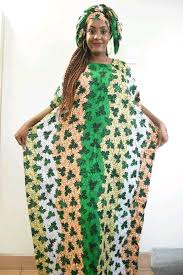

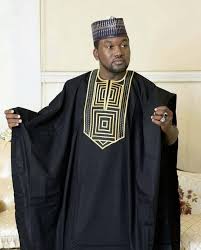
ACCESSORIES IN CHAD






















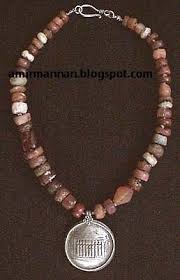
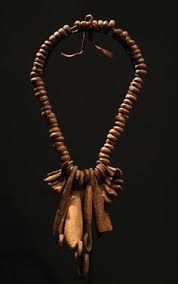
TRIBES IN CHAD AND THEIR FASHION
The Hausas
The Hausa of Chad, with a population of 271,000, speak Hausa as their major language. Folk Islam, a syncretistic religious system that incorporates traditional components of Islam, is the Hausa’s major religion. The ornate attire of Hausa men makes them easily identifiable. Many women wear wide, flowing dresses with exquisite embroidery around the neck (gare, babban gida). They also wear embroidered headgear with bright colors (huluna). Hausa women wear a bright wrap-around robe with a matching blouse, head tie, and shawl.


The Saras
The Sara, who live in the subtropical regions to the south, and the Arabs, who are predominantly Muslim, are the two major ethnic groups in Chad. Many people live as nomads or subsistence farmers, while some do dwell in N’Djamena’s metropolitan neighborhoods. All of these elements, from race to religion to occupation, have an impact on how people dress on a daily basis.


TOURIST AND HISTORICAL PLACES IN CHAD
N’Djamena – N’djamena, Chad’s capital and largest city, has a mix of modern and old cultures.

Moundou – it is Chad’s second largest city located along the Mbere River. The Gala Brewery, which has been producing the country’s most popular lager since independence, is located in the city.

The Lakes of Ouianga – The Ouianga Lakes are made up of 18 lakes that are fed by so-called underground fossil water.

Goz Beida – The town is best visited as a base for exploring the same-named national park nearby. Although it has been impacted by warfare, illegal poaching, and other atrocities, the Goz Beida National Park provides a shelter for both rare and endangered animals.

Faya-Largeau – It is the largest city in northern Chad and is located on the Sahara desert’s edge.

Ennedi – The Ennedi Desert is located in Chad’s Ennedi region. The landscape is harsh, with scorpions and beetles aplenty, but it also has some of the world’s most magnificent and bizarre rock formations.

Douguia – In Chad, Douguia is the closest thing you’ll find to a tourist hotspot. The Chari River, which runs through the city, is responsible for much of the city’s tourist appeal.

Bol – The city of Bol, which is located in the Lac area of the country, has its own airport. Lake Chad, which is close by, is the main reason for visitors.

Aouk National Park – Aouk National Park is another of Chad’s natural refuges, and while it lacks the same level of protection as Zakouma National Park, it is nonetheless home to a diverse range of mammals and birds.

Am Timan – The city is impoverished and underdeveloped, but it is noted for holding the county’s largest and most active markets, as well as spectacular holiday celebrations.

Abeche – Mosques, sultan’s tombs, and palace ruins are scattered around the city, which served as the country’s old capital.

Zakouma National Park – It is widely regarded as one of the remaining true wildlife refuges in Central Africa, as well as one of the most effective conservation projects in the region. Rare and diverse mammalian and avian species abound in the park.

Tibesti Mountains – The Tibesti Mountains are difficult to reach and explore, but they provide a wealth of opportunities for daring travelers. The Emi Koussi, at 3,500 meters above sea level, is the tallest peak in the area.
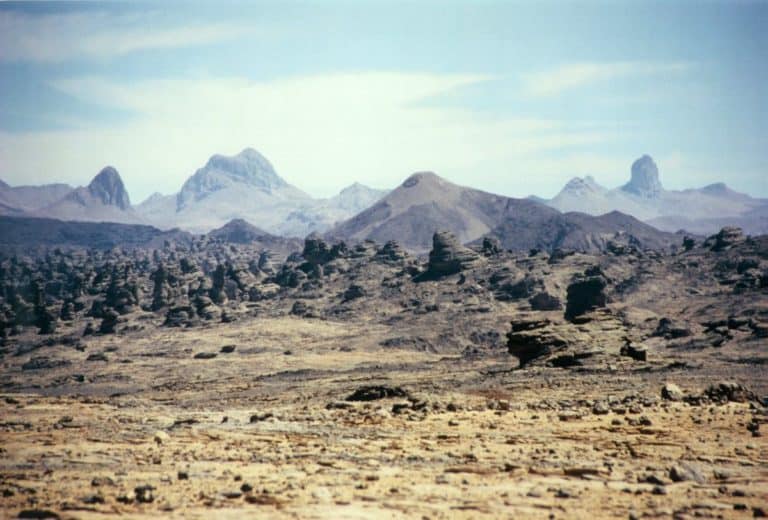
Sarh – The French Colonial Fort Archambault was previously located in Sarh. It is located on the Chari River, approximately 350 kilometers from N’Djamena, the capital city.

MUSIC IN CHAD
Chad is a Central African country with a mixed ethnic population. Each of the regions have their own music and dancing styles. Single-reeded flutes are used by the Fulani people, whereas the old griot culture uses five-string kinde and various types of horns, and the Tibesti region uses lutes and fiddles. In both Chad and Sudan, musical groups including horns and trumpets, such as the long royal trumpets known as “waza” or “kakaki,” are employed in coronations and other upper-class ceremonies.
Sai, a form of Chadian popular music that uses rhythms from the southern region of the country, was popularized by the Tibesti ensemble. International Challal and African Melody from the Sahel are two such ensembles.
Some prominent musicians in Chad include:
Mounira Mitchala

Menodji Clarisse

Some Art work in Chad include:






MEALS IN CHAD
Peanut and Squash Stew – It is an essential meal on the Chadian dinner table. Its delectable and fascinating flavor will immediately entice your taste senses.
Maharagwe – It is a straightforward culinary dish. It is extremely popular in Chad and East Africa.
La Bouillie – It’s a Chadian breakfast recipe that may be found on people’s tables all around Chad. It has a similar consistency to porridge.
Kissar – It’s a specific type of pancake or sourdough crepe. In Chad, this wonderful recipe is a must-have for important occasions.
Kisra – It is a fermented bread that is commonly prepared.
Jus de Fruit – it is a great way to end your celebration or kick off a new day full of energy. Fruits, ice, milk, and cardamom are all used in this refreshing recipe.
Peanut and Squash Stew

Maharagwe

La Bouillie

La Bouillie

Kisra

Jus de Fruit

Jarret de Boeu – People in the south of the country love this vegetable and meat stew. Its intense flavor will pique your interest right away.
Daraba – This recipe has a variety of vegetables, including tomatoes, potatoes, and aubergine (eggplant).
Capitaine – This fish can be found in abundance in Lake Chad and The Chari Ri. It’s also known as Giwun Rawa or Water Eggplants. The flavor of this cuisine will drive you insane.
Bangaou – It will assist you in supplementing proteins and fiber with meat and vegetables. It’s a great dish to serve with rice or couscous.
Aiyash – It is a Chadian traditional food. Millet flour paste is the key ingredient in these eye-catching balls. It has the appearance of dumplings or croquettes.
Jarret de Boeu

Daraba

Capitaine

Bangaou

Aiyash

ENVIRONMENTAL CONSERVATION AND HABITAT PROTECTION IN CHAD
According to the United Nations Food and Agriculture Organization (FAO), Chad is 9.2% forested, or roughly 11,525,000 acres. Primary forest, the most biodiverse and carbon-dense type of forest, accounts for 1.6 percent (184,000) of the total forest area. Chad has 17,000 hectares of woodland planted. Chad lost an average of 79,250 hectares per year between 1990 and 2010, or 0.60 percent per year. Chad lost 12.1 percent of its forest cover, or roughly 1,585,000 acres, between 1990 and 2010.
In living forest biomass, Chad’s woods contain 635 million metric tons of carbon. Biodiversity and Protected Areas: According to the World Conservation Monitoring Centre, Chad has 698 species of amphibians, birds, mammals, and reptiles. 0.3 percent are endemic, meaning they can only be found in one country, while 2.6 percent are endangered. At least 1600 species of vascular plants may be found in Chad. IUCN classifications I-V preserve 9.0 percent of Chad’s land.










EFFECT OF CLIMATE CHANGE IN CHAD
Chad is a Sahelian country with arid soil, harsh climates, and floods. Arid and desert landscapes, on the other hand, are good prospects for flooding because sand and dry terrain do not readily absorb water after heavy rains, resulting in floods. Droughts and floods are becoming more often as a result of climate change exacerbated weather variability. Climate change will affect all countries, but a country’s readiness or lack thereof will define its vulnerability during climate-related extreme weather events. Chad’s location renders it extremely vulnerable. It is one of the world’s most environmentally deteriorated countries, with projected temperature increases 1.5 times higher than the rest of the world in its western, northern, and eastern regions.










GENDER EQUALITY IN CHAD
Women’s rights have made modest progress around the world. In Chad, however, more work needs to be done to achieve gender equality. Girls in Chad are required to fulfill gender roles, which is one of the main reasons they do not receive an equal education.
Some prominent women in Chad include:
Tyoupta Boguena – Chadian scientist and administrator who served as Chad’s Minister of Public Health.
Hinda Deby Itno – The First Lady of Chad.
Bintou Mallam – Chadian politician and first ambassador of Chad to Germany.
Amina Priscille Longoh – Chadian humanitarian organizer and politician, who served as Chad’s Minister of Women and the Protection of Early Childhood.
Tyoupta Boguena

Hinda Deby Itno

Bintou Mallam

Amina Priscille Longoh

Lydie Beassemda – Chadian politician who is currently Minster of Higher Education and Research.
Achta Saleh Damane – Chadian journalist and politician.
Lydie Beassemda

Achta Saleh Damane




